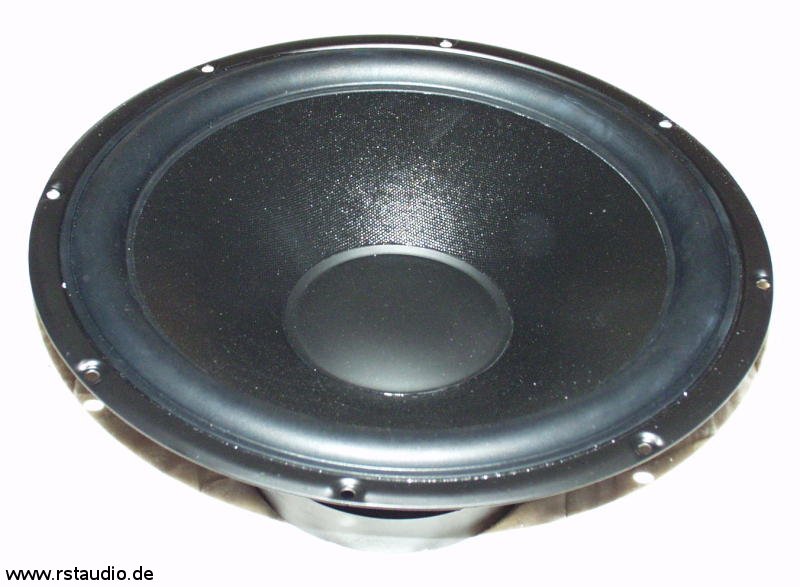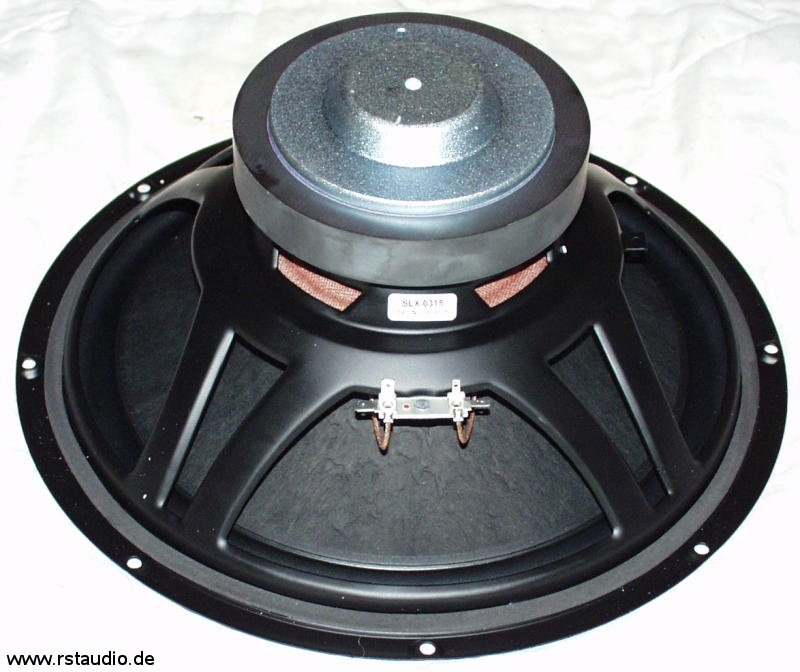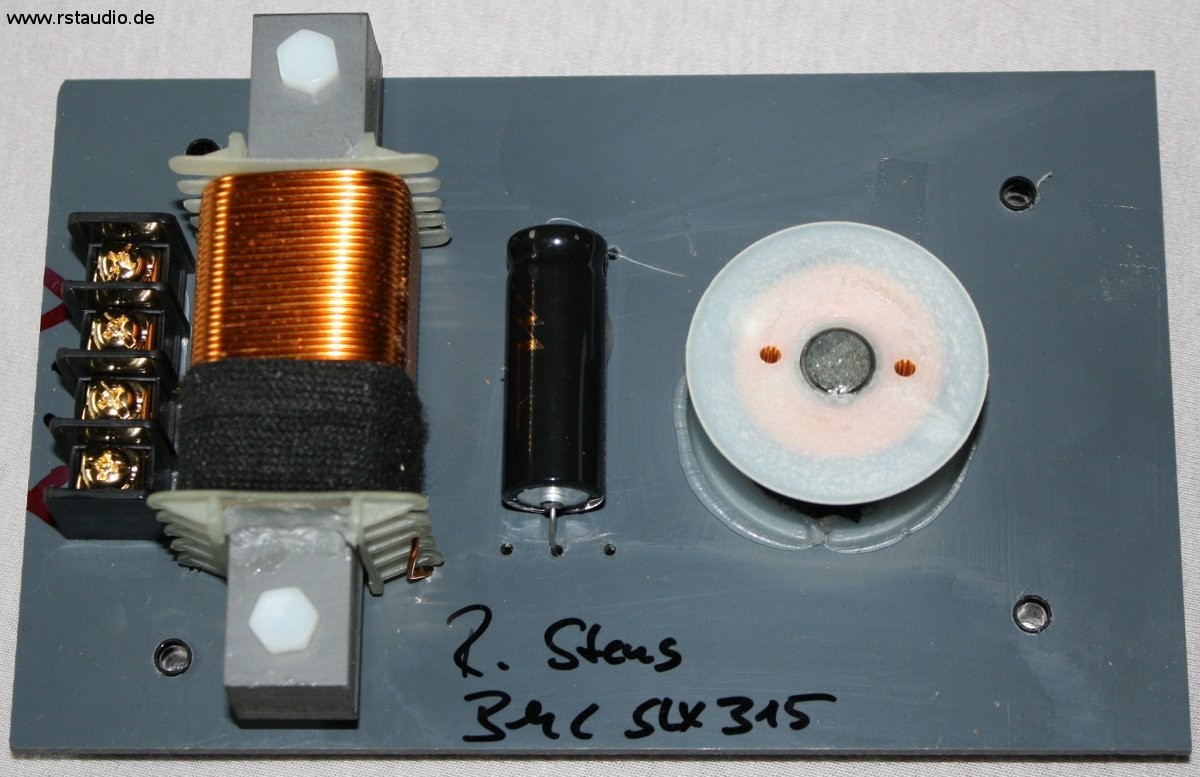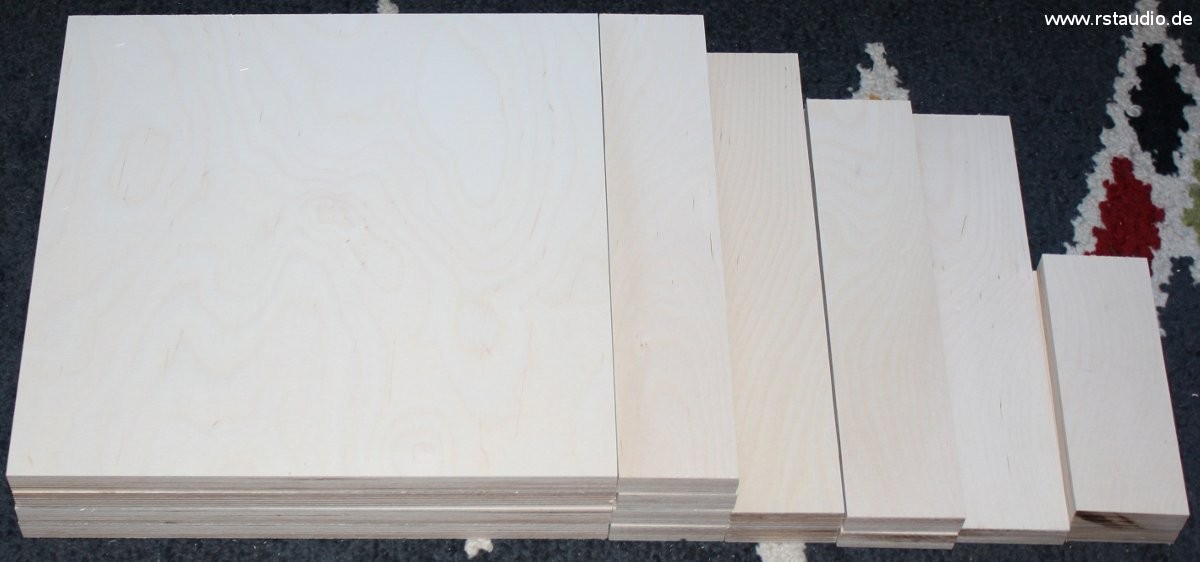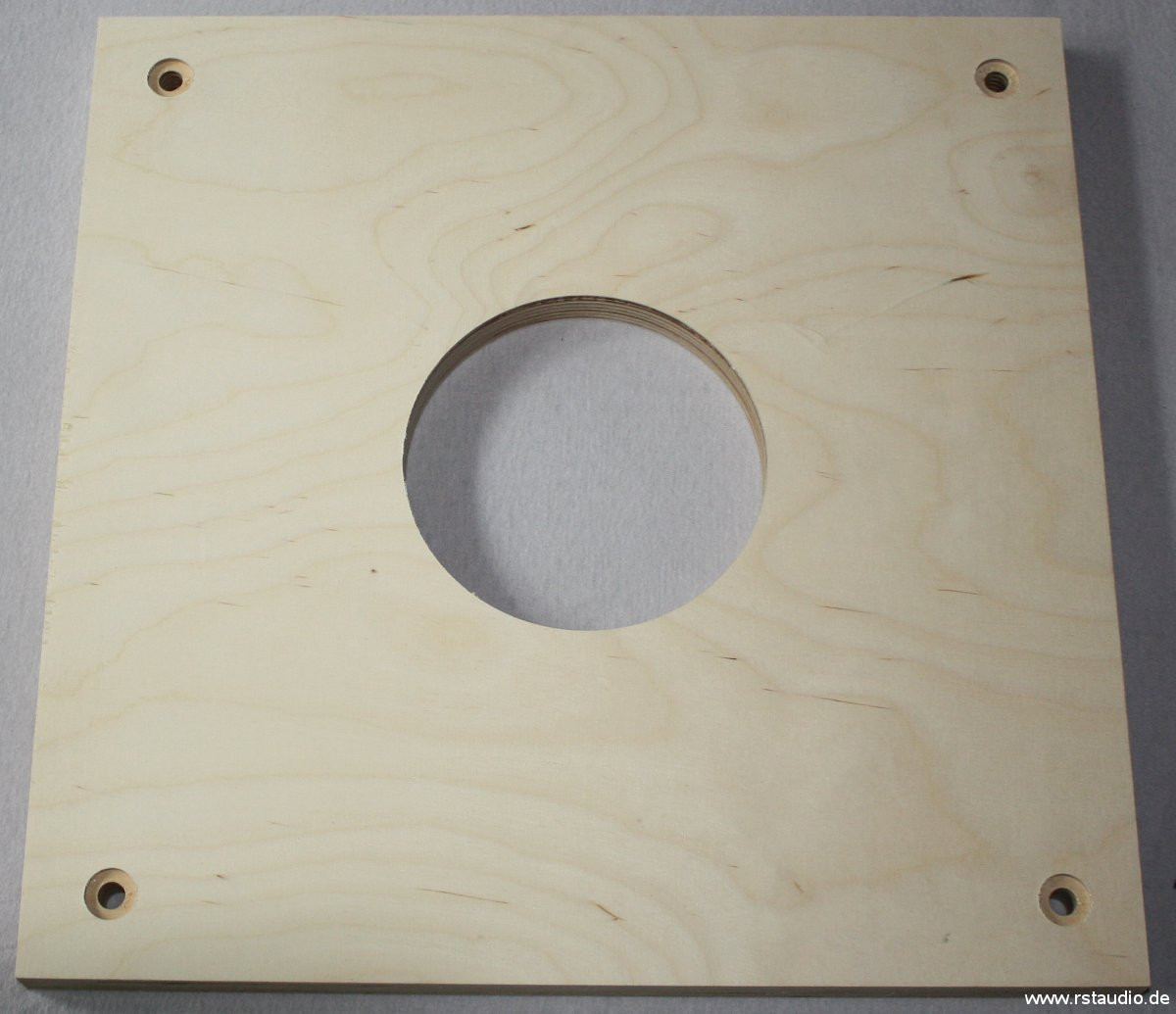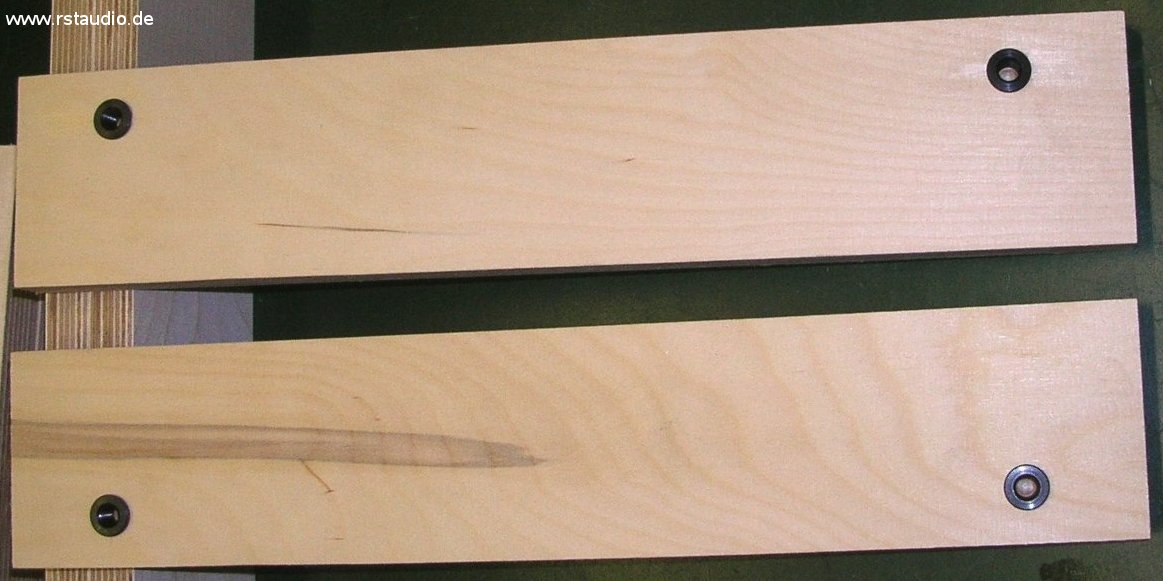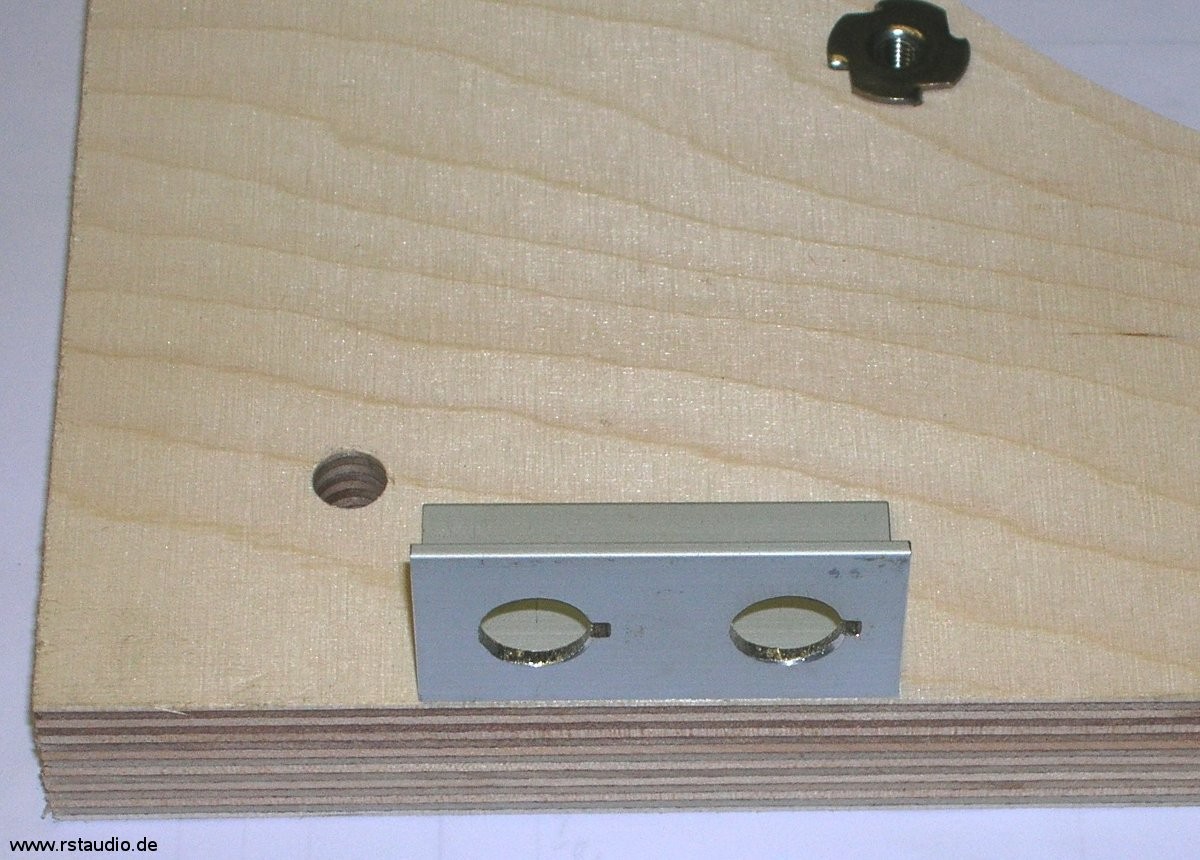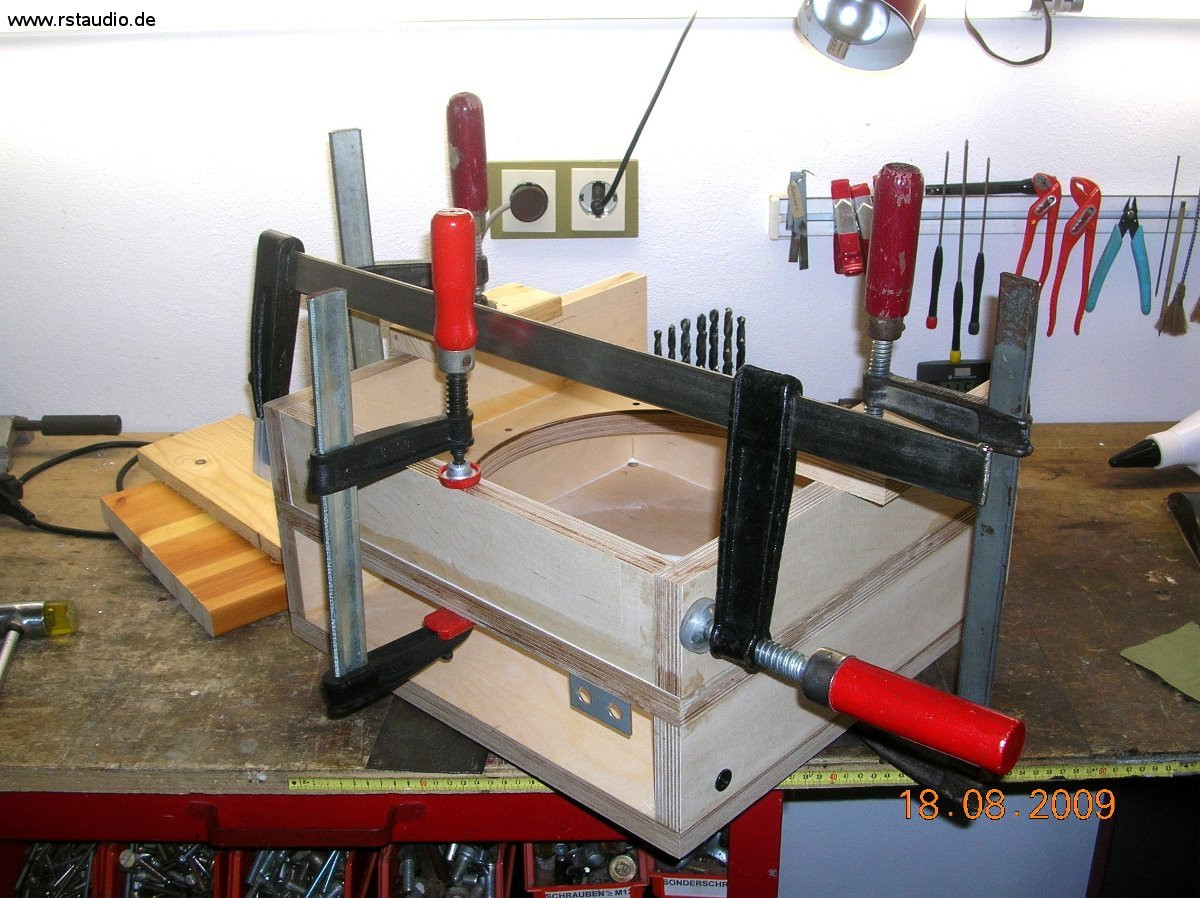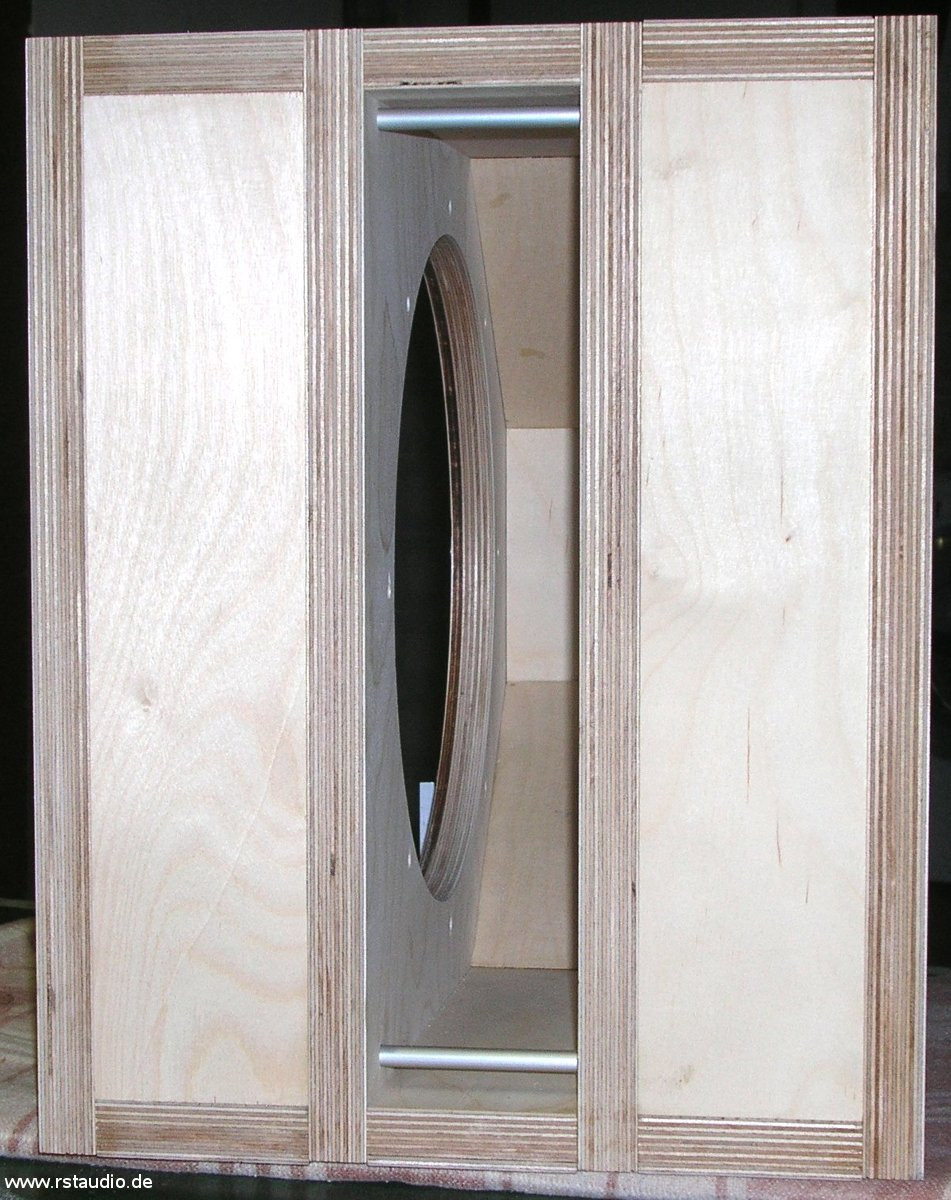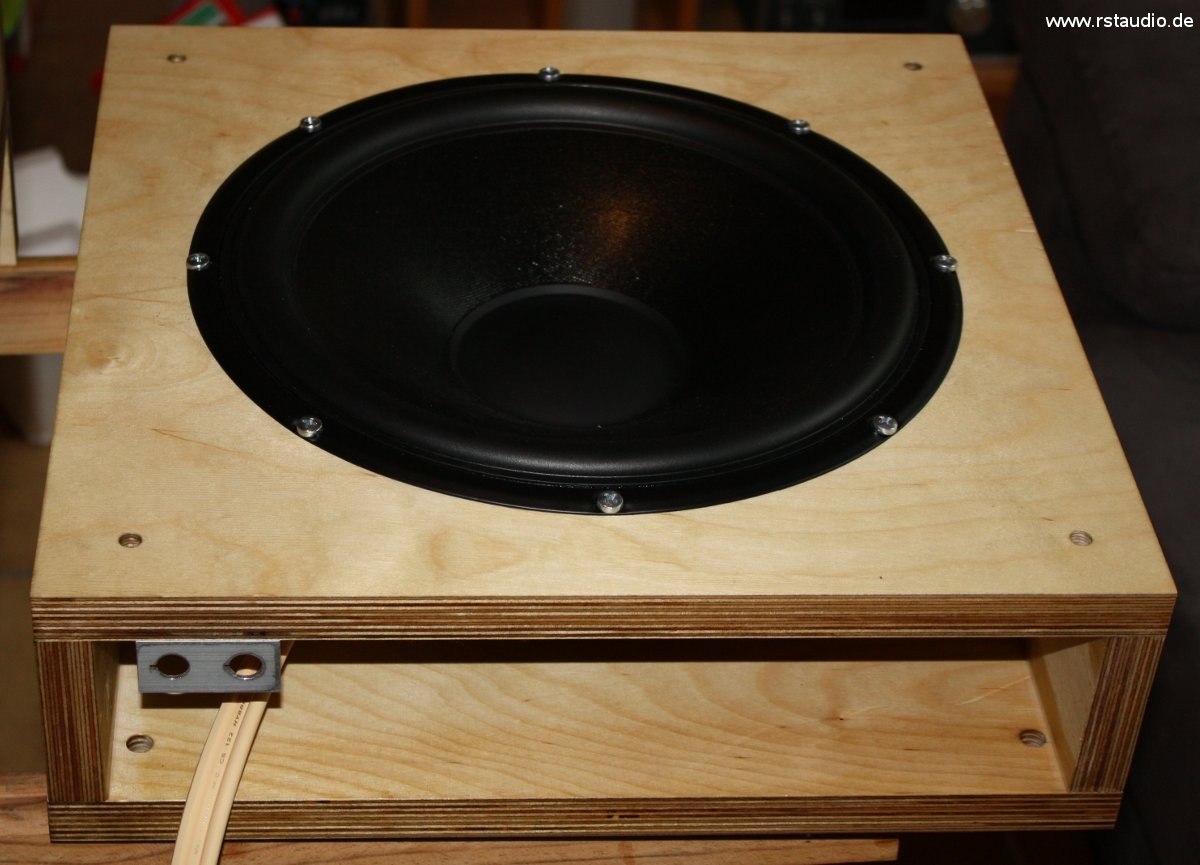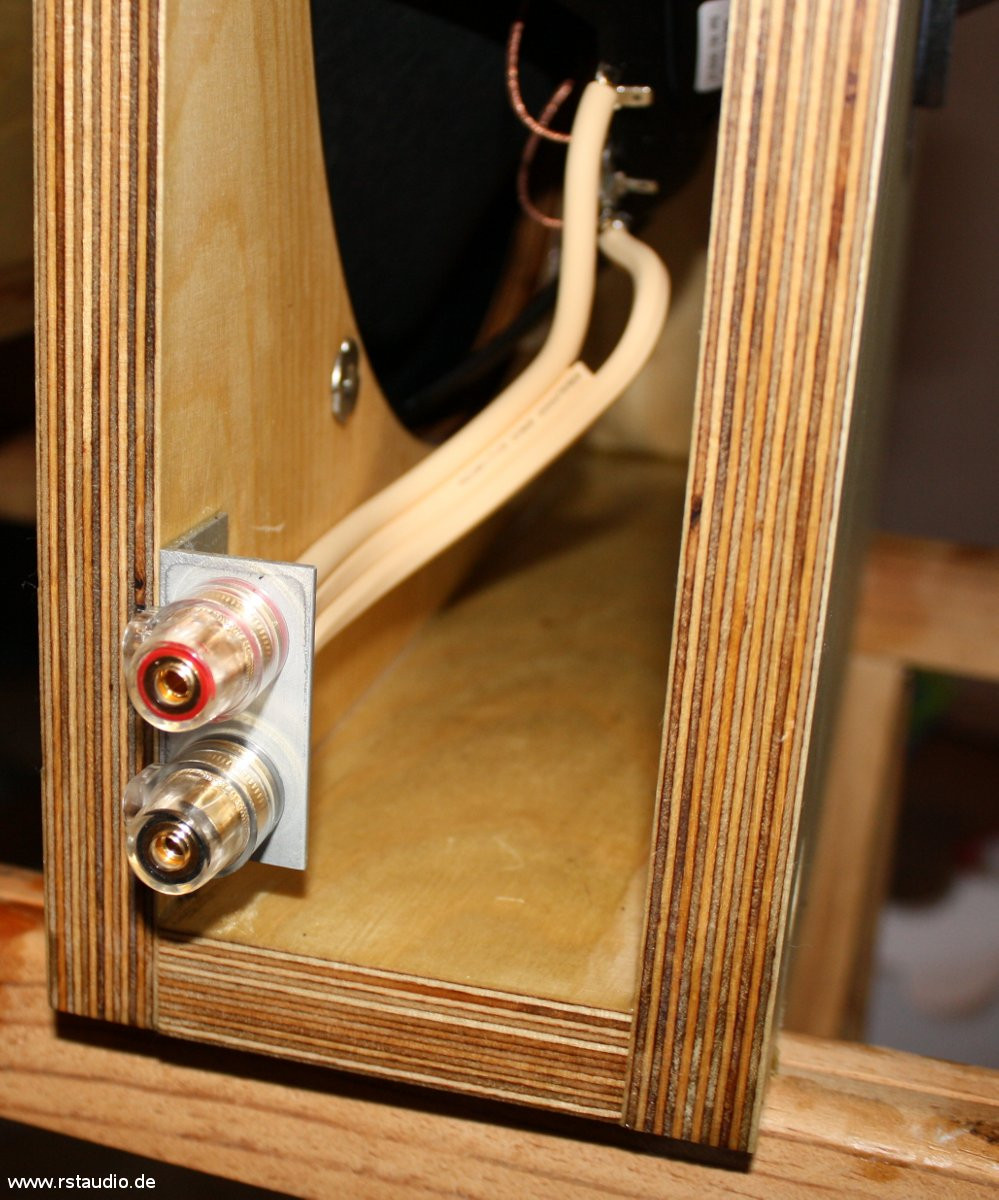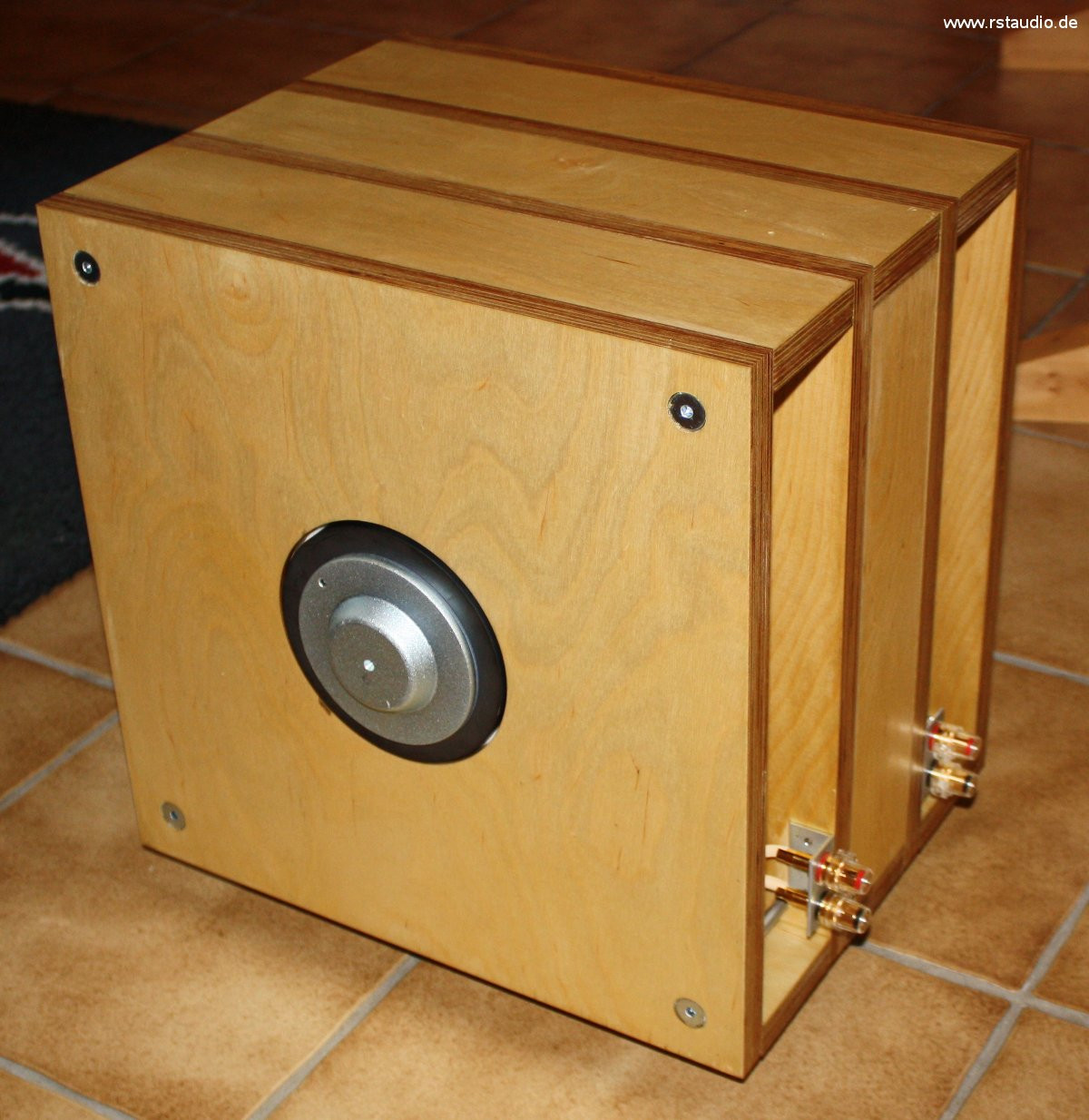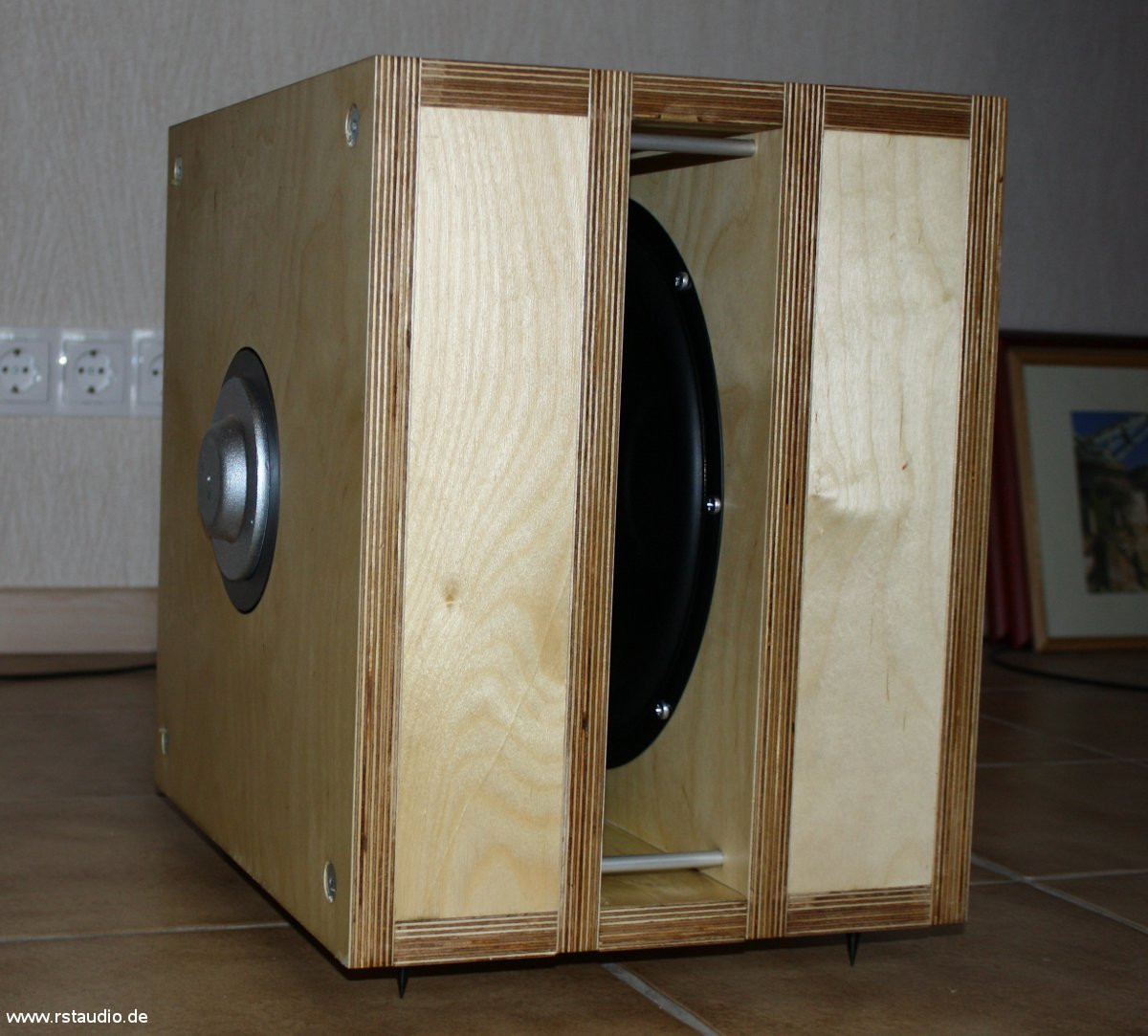
Table of Contents
- Introduction
- Description of the RiPol Subwoofer
- SLX-315 Bass Chassis & Compensation Circuit
- Assembly of my RiPol
- Electronic needed for the Subwoofer
Introduction
23-08-2021
The idea of supporting my 57 Stacked Quads with a subwoofer has been on my mind for many years. At the beginning of 2006, I started to seriously look into this topic. For a long time I favoured the subwoofer from the Cumulus surround system presented in the special issue Special 1 – Home Cinema + Surround of Speaker DIY magazine Hobby HiFi. Over time, however, my interest shifted more and more towards open dipole subwoofers such as the designs of Linkwitz Lab and the Disub 12/2 from Hobby HiFi 4/2007.
The deciding factor was a demonstration at the HiFi-Music-World 2008. At JAC Music, Axel Ridtahler demonstrated his RiPolar_05 loudspeaker with a full range driver and QBMC RiPoles in the bass (BMC: Blow Motion Control, QBMC: 2 BMC RiPoles mounted one above the other). I was immediately impressed by this bass system, as its basic concept corresponds to the dipole subwoofers listed above. However, the size of these systems is surprisingly small and therefore particularly suitable for my small listening room. The bass reproduction corresponded to the descriptions of dipoles, stunningly clean and virtually coming and going out of nothing – all very impressive !!!
Immediately after the fair I contacted Axel by e-mail and got immediately a very friendly and informative contact. This culminated in an order from me for 2 SLX-315 30cm chassis distributed by him, the dimensioning of an associated BMC enclosure and the passive equalisation circuit calculated and built for the two chassis – and all this for a price about which one can certainly not complain !!!
Description of the RiPol Subwoofer
23-08-2021
Before describing my own RiPol subwoofer, I would like to let the inventor of the system himself have his own word. The following, with the kind permission of Axel Ridtahler, is an excerpt from his general description of these systems (the text was translated into English by me / by deepl.com) :
The radiation behaviour of conventional bass systems is spherical below a certain frequency. A dipole is clearly defined physically and shows the typical 8-shaped radiation. The RiPol is the special design of an open bass dipole.
Due to its special housing, the RiPol does not have this exactly symmetrical radiation but, because of the different sound intensity radiated to the rear and to the front, an asymmetrical omnidirectional behaviour, which, however, also results in a more advantageous frequency response. Since the radiation of the RiPol does not correspond to the – in the physical sense – classical shape of the 8, the RiPol is not an ideal dipole but a RiPol. The omnidirectional diagrams clearly show the difference to the classical dipole, which justifies a clear distinction by name.
The RiPol enclosure strongly influences the radiation behaviour. You can see the effect of how the ‘enclosure’ prevents the air from giving way to the diaphragm movement too quickly, thus increasing the radiation resistance. The natural resonance of the drivers is lowered by mounting them in the BMC (2 drivers) or DRS (1 driver) RiPol cabinet, and the reproduction quality in the low bass behaviour is improved the smaller this cabinet becomes (!!). There are, of course, limits to how low the cabinet can go, which is why the design of the RiPol cabinet is subject to iterative optimisation, calculation and simulation. The arrangement with 2 drivers (BMC) also ideally realises the impulse compensation that makes sense in this frequency range, and all this in an optimally small cabinet.
A RiPol radiate low frequencies directionally. Once to the front and with a different intensity and 180° twisted phase to the rear. This property reduces harmful standing waves. These are energy storage effects in the room, also called room modes. Standing waves can create the acoustic impression in the listening room of sluggish low-frequency energy that does not want to decay. Bass-strong loudspeakers then pump the room full of bass energy, albeit ‘frequency-selectively’ – the impression of a lame or sluggish bass remains. A RiPol produces low-frequency ‘antimatter’, so to speak, which prevents this effect from occurring in the first place. A bass impulse is released and its counter wave prevents it from ‘stopping’, so to speak, from behind. The signal is not washed out by its multiple superimpositions. This characteristic makes the RiPol one of the most musical sub-systems.
And another effect should be mentioned at this point:
Due to the directional bass radiation, zones are created to the side of the RiPol that are free of low-frequency sound components. These areas are the right place for microphony-sensitive devices such as record players, tube electronics, etc. These, next to a RiPol, are not disturbed in their work by low frequencies!
The RiPol is actively driven (like any reasonable sub). In addition, for the RiPol to function correctly, a passive compensation circuit is required to adapt the drivers to the cabinet.
If you are also interested in such a subwoofer system, please contact Axel directly at the following address:
Patent number : DE 198 30 947 A 1
SLX-315 Bass Chassis & Compensation Circuit
23-08-2021
At the end of November / beginning of December 2008, the ordered parts from Axel arrived. Here are some photos of one of the 30cm bass drivers.
and the associated compensation circuit
Assembly of my RiPol
23-08-2021
After I had received the construction dimensions from Axel, I converted them into drawings with a 2D CAD programme (QCad under Linux) and ordered the individual parts as cut-to-size parts from a carpenter in 21mm thick birch multiplex.
The holes and cut-outs were then machined into the side panels using a Datron M35 CNC milling machine.
After that, all the parts were pre-processed or procured so that we could start assembling. Although it is a very simple loudspeaker cabinet, the assembly took almost 4 days. During this time, the wooden parts were glued together, two aluminium brackets with holes for the speaker connections were made, the spikes were mounted in the bottom boards, aluminium rods for screwing both parts of the cabinet together were cut and threaded at both ends, the wood was painted with glaze, the drivers were mounted and wired and then everything was put together.
At this point – once again – my heartfelt thanks go to my father, without his active support I would not have been able to make the cases so neatly.
I then treated the wood with clear wood preservative stain.
After the glaze had dried – I waited 24 hours for this – I could continue with the installation of the drivers and the assembly of the subwoofer.
For the internal wiring from the terminals to the drivers I used van den Hul CS-122 speaker cable. I will use exactly the same cable to connect to the power amplifier.
This was my first loudspeaker project and I learned that it really is not easy to work with wood. But in the end – with a lot of help (see above) – I have a very attractive subwoofer in my listening room.
In terms of sound, the subwoofer meets all my expectations. It is certainly not a system with which you can effectively watch video films, but as a hi-fi subwoofer it is exactly the right partner for my electrostats. The bass is as described above – clean, crisp and coming and going out of nothing. I am very enthusiastic and the effort to build this subwoofer has paid off completely.
Addendum:
I have been dealing with audio equipment for more than 30 years now, but I have never experienced such a drastic change of a device after a certain break-in time as with the RiPol. This subwoofer takes some time, but then it is
phenomenal !!!
All the positive characteristics described above have further developed for the better and the transmission range downwards has become larger.
Electronic needed for the Subwoofer
23-08-2021
Power Amplifier
I have been thinking for a long time about which power amplifier is the right choice for this subwoofer. It started with a replica of a Pass Labs X600. However, the effort was too much for me and so I looked around for digital power amp modules. My choice fell on the Hypex UcD 400 module from Holland, which should provide enough power with 400W at 4Ω. Somehow I couldn’t quite get used to the idea of a digital power amplifier at the beginning and so I designed a power amplifier adapted to my needs with the help of the circuit diagrams of the Pass Labs X5 power amplifier. In March 2009, however, I came across a cheap offer for Hypex UcD400HG modules on ebay and so the decision regarding a power amplifier for the subwoofer was made.
All further information on this power amplifier can be found under the description of the Hypex Class D power amplifier.
Active Crossover
However, not only a power amplifier is needed to operate the subwoofer. There must also be an appropriate crossover to distribute the signals to the speakers. I have described how such a crossover can look here. With the analogue active crossover AFW1 I operated the RiPol for many years with Linkwitz-Riley filters at a crossover frequency of 127Hz.
I have been using FIR filters since the beginning of 2021. How something like this looks like can be read here.
